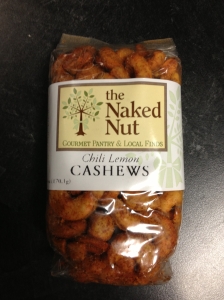by RACHAEL FEIL
Co-Editor
We have all tasted and enjoyed delightful almonds, peanuts, pecans, cashews, and other nuts (unless, of course, you are allergic and are missing out on something fantastic). How these various nuts grow may not be common knowledge however. All nuts grow with some kind of shell around them, but what distinguishes cashews from the rest of the nuts in the nut family is the fact that they are actually grown on certain types of apples.
The apple part of the cashew apple is very rich in nutrients and has fives times more vitamin C than an orange contains. In other countries, it is eaten or prepared many different ways. Many eat it fresh, but it can also be cooked in curries, fermented into vinegars as well as alcoholic drinks, and used to make preserves, chutneys, and jams (which are very popular in India and Brazil). In parts of South America, natives view the apple as a delicacy rather that the cashew nut part of it.
Cashew apples have a highly astringent taste due to the waxy layer on the skin that causes irritation to occur on the tongue and in the throat. In cultures that frequently eat cashew apples, they remove the astringent quality that the apples possess either by steaming the fruit for five minutes before washing it in cold water, boiling the fruit in salt water for five minutes, or soaking them in a gelatin solution which reduces the concentration to make the apple more edible.
This apple is very foreign to our society since we are used to only eating cashew nuts. The kidney-shaped drupe that grows on the end of the apple is probably what we consider the ‘true fruit’ of the cashew apple. This part is what develops first on the tree. After this develops, the pedicel expands to grow into the cashew apple. Within this fruit is the cashew nut, a single seed. It is surrounded by a double shell containing allergenic phenolic resin and anacardic acid, which is a skin irritant chemically related to allergenic oil urushiol, the toxin found in poison ivy. Roasting the cashews destroys the toxin, but one must roast them outdoors in order to avoid a catastrophe. The smoke contains urushiol droplets which can irritate the lungs if inhaled and can cause severe, sometimes even deadly, reactions.
Now, I am sure that most of you Miners learned something new today! This is rich information that you can use to impress family and friends, and now you will always have a fun fact to share with others whenever someone brings up cashews. Keep calm, and eat cashews, Miners!

